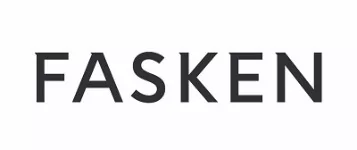- within Food, Drugs, Healthcare and Life Sciences topic(s)
- in United States
- within Insurance topic(s)
- with Senior Company Executives, HR and Finance and Tax Executives
- with readers working within the Business & Consumer Services, Insurance and Healthcare industries
Important amendments to the Exception Patient Measure came into effect on June 2, 2025. A summary of the key changes is provided below.
On June 30, 2025, the Minister of Health announced major amendments to the Exception Patient Measure ("PE Measure"), significantly narrowing patient eligibility in Quebec. These changes, with the first phase taking effect on July 2, 2025, will be rolled out in three phases. Below is an overview of the key updates.
The Exception Patient Measure
In Quebec, patients are eligible for public coverage of medications that are listed on the List of Medications. However, through the PE Measure, under certain exceptional circumstances, a patient may receive reimbursement for a medication that is not included on this list, or, in the case of an exceptional medication, when it is prescribed for a therapeutic indication not specified for that medication on the list. More specifically, a medication may be covered if it is required to treat a severe medical condition and if no listed pharmacological or covered medical alternative is viable due to contraindication, significant intolerance, or ineffectiveness related to the patient's condition.
Previously, authorization under the PE Measure could be obtained by submitting a form outlining the severity of the patient's medical condition and confirming that the medication was intended for a chronic condition, an acute infection, or palliative care – these criteria constituting the basis for approval. However, recent amendments have further tightened the eligibility criteria and now require that additional factors be addressed.
Key Changes to the PE Measure
The amendments in effect since July 2, 2025, impose stricter requirements for patients to qualify under the PE Measure. Below is a summary of the key changes:
In Effect Since July 2, 2025
Since July 2, 2025, a drug whose therapeutic value is not recognized by the Institut national d'Excellence en santé et en services sociaux ("INESSS") is excluded from the PE Measure.
There are however various exceptions to this rule:
- The request for PE Measure was accepted before INESSS published its non-recognition of the drug's therapeutic value (i.e., pre-existing patient coverage (or patient grandfathering)).
- The non-recognition of therapeutic value from INESSS was issued before July 2, 2025. (i.e. pre-existing INESSS non-recognition (or drug grandfathering)).
- The request targets the same indications, but the patient presents different characteristics than those studied by INESSS (supporting studies must show that these characteristics lead to greater benefit than observed in the INESSS assessment).
- Treatment was already started in an establishment with the pharmacology committee's approval.
In addition, for an initial request, the request must demonstrate clear, measurable benefits for the patient's condition, supported by the best available scientific evidence. For a renewal request, there must be evidence that the drug has delivered the expected, measurable benefits.
Finally, payment authorizations approved before July 2, 2025, remain valid until their expiry. To maintain RAMQ reimbursement beyond that date, new requests must be submitted showing the benefits obtained.
In Effect as of September 25, 2025
From this date, if a generic is marketed in Canada, only this version may be reimbursed under the PE Measure. If the generic version is not yet available, the patient may remain eligible for the innovator drug.
There are a few notable exceptions:
- If there is a shortage of the generic version.
- If a patient has a documented severe allergy or intolerance to a non-medicinal ingredient present in the generic but not in the innovative drug.
In such cases, a request for exceptional reimbursement of the innovative drug must be submitted.
In Effect as of December 11, 2025
For any new indication or new drug, the manufacturer must, within 120 days of receiving Health Canada's Notice of Compliance:
- Submit an application to INESSS for inclusion on the List of Medications.
- Obtain a positive admissibility decision from INESSS (confirming that all required documents have been provided for the application).
Otherwise, the drug will be excluded from the PE Measure.
Moreover, an authorization request will be denied if it concerns a generic or biosimilar version of a drug that was refused under the conditions described above, (i.e., even if the generic/biosimilar manufacturer submitted within 120 days of the Notice of Compliance, if there was no positive decision for the innovative product, the generic/biosimilar version will not be eligible for the PE measure).
The 120-day period is exempted in the following cases:
- If a drug has already been authorized for a specific patient under the PE Measure, it may be renewed for that patient if the expected benefits are demonstrated.
- If Health Canada issued the Notice of Compliance for the drug and the indication for which authorization is sought predates December 11, 2025, the request may still be evaluated.
- For a payment authorization request for a generic or biosimilar drug, if the Notice of Compliance for the corresponding brand-name drug or reference biologic, for the indication for which authorization, was issued by Health Canada before December 11, 2025, the request may still be evaluated.
- INESSS has published a notice made to the Minister concerning the indication for which authorization is sought for that drug or the brand name or reference biologic drug for that drug.
- If treatment began under private insurance while the drug was still eligible, renewal remains possible if all other exceptional patient conditions are met.
These measures may affect patient access pathways, reimbursement strategies, and compliance obligations for manufacturers and distributors.
Fasken will continue to monitor these developments closely and provide timely updates as the situation evolves.
The content of this article is intended to provide a general guide to the subject matter. Specialist advice should be sought about your specific circumstances.




